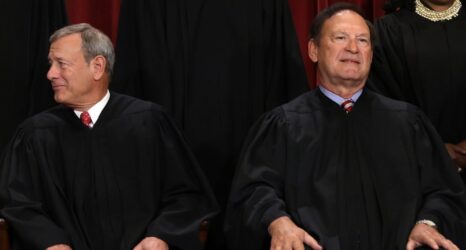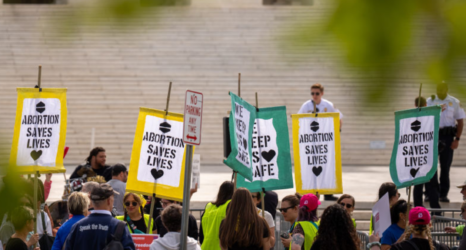The most important thing to know about the Supreme Court’s decision on June 1 in Elonis v. United States is that it does not resolve the question of when the First Amendment allows people to be punished for speech threatening others. Facebook and other social media have made it much more common for people to make threatening statements that cause others to fear for their safety and even their lives. Studies have shown that women are much more often the victims of such threats, often in the context of bitter divorces and child custody fights.
In fact, that is the context in which the Elonis case arose. Anthony Elonis used Facebook to make many angry statements after his wife, Tara, left with their two children. He was fired from his job at an amusement park after posting on Facebook a picture of a knife being held against the throat of a woman who had accused him of sexual harassment. After his firing, he posted messages that said that he still had keys to the park and could come do violence there.
Many of his Facebook messages were directed at Tara. For example, he wrote: “If I only knew then what I know now … I would have smothered your ass with a pillow. Dumped your body in the back seat. Dropped you off in Toad Creek and made it look like a rape and murder.” He posted rap lyrics that similarly expressed the desire for harm to Tara. One posting said, “So hurry up and die, bitch, so I can forgive you,” and another said, “Revenge is a dish that is best served cold with a delicious side of psychological torture.”
Tara went to court and got a protection-from-abuse order against Anthony, but he continued to post angry messages, often in rap lyrics directed at Tara. She testified that some of these caused her to be “extremely afraid for [her] life.”
Elonis also posted on Facebook that he was planning to go to a kindergarten class and engage in a mass shooting: “I’m checking out and making a name for myself … Enough elementary schools in a 10-mile radius to initiate the most heinous school shooting ever imagined … The only question is which one?”
Elonis was indicted for violating a federal statute that prohibits “transmit[ting] in interstate or foreign commerce any communication containing any threat to kidnap any person or any threat to injure the person of another.” Elonis moved to dismiss the indictment based on his First Amendment right to free speech and argued that there needed to be proof that he had intended to place his ex-wife in fear of death or great bodily harm (called “subjective intent” in legal terms). The judge, however, rejected this argument and instructed the jury to assess whether or not the statements made would cause a “reasonable person” to feel threatened (called “objective intent.”) Elonis was convicted and the United States Court of Appeals for the Third Circuit affirmed.
On Monday, the Supreme Court in a 7-2 decision reversed the conviction. The Supreme Court focused entirely on what is required for a conviction under this federal statute. In an opinion by Chief Justice John Roberts, the court said that the federal law requires proof that the defendant, Elonis, intended to threaten others or at least that he was reckless in his statements. The original jury was not instructed in this way so the conviction was overturned and Elonis can be retried under the new standard.
The court did not rule that Elonis was innocent under the statute. Nor did the court hold that Elonis’ speech was protected by the First Amendment. Instead, the court decided narrowly and concluded only that for this federal statute a jury must be instructed that in order to convict it must conclude that the defendant acted intentionally or at least recklessly.
To be sure, this will make it harder for the government to gain convictions in some cases. But given what Elonis wrote, there is a good likelihood that a jury will find that he intended to threaten others. Moreover, nothing in the case limits criminal prosecutions under state laws for making threats or civil suits for money damages by those who have been threatened.
For decades, the Supreme Court has said that “true threats” are not protected speech under the First Amendment. The issue remains as to what constitutes a true threat and when may such speech be constitutionally punished. Many thought that the Supreme Court would address this question in the Elonis case, but it did not do so and thus left unresolved a conflict among the lower courts. In a world of Facebook and other social media, it is an issue sure to come back before the court sometime soon.
Get Ms. in your inbox! Click here to sign up for the Ms. newsletter.
Photo courtesy of Flickr user Marco Paköeningrat licensed under Creative Commons 2.0
Erwin Chemerinsky is an expert in constitutional law and dean and distinguished professor of law at the University of California-Irvine.





